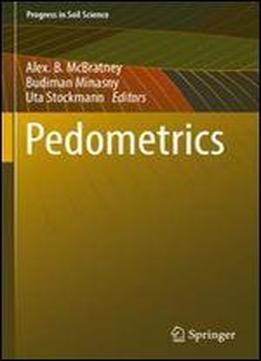
Pedometrics (progress In Soil Science)
by Alex. B. McBratney /
2018 / English / PDF
27.3 MB Download
This book presents the basic concepts of quantitative soil science and, within this framework, it seeks to construct a new body of knowledge. There is a growing need for quantitative approach in soil science, which arises from a general demand for improved economic production and environmental management. Pedometrics can be defined as the development and application of statistical and mathematical methods applicable to data analysis problems in soil science. This book shows how pedometrics can address key soil-related questions from a quantitative point of view. It addresses four main areas which are akin to the problems of conventional pedology: (i) Understanding the pattern of soil distribution in character space – soil classification, (ii) Understanding soil spatial and temporal variation, (iii) Evaluating the utility and quality of soil and ultimately, (iv) Understanding the genesis of soil. This is the first book that address these problems in a coherent quantitate approachThis book presents the basic concepts of quantitative soil science and, within this framework, it seeks to construct a new body of knowledge. There is a growing need for quantitative approach in soil science, which arises from a general demand for improved economic production and environmental management. Pedometrics can be defined as the development and application of statistical and mathematical methods applicable to data analysis problems in soil science.
This book shows how pedometrics can address key soil-related questions from a quantitative point of view. It addresses four main areas which are akin to the problems of conventional pedology: (i) Understanding the pattern of soil distribution in character space soil classification, (ii) Understanding soil spatial and temporal variation, (iii) Evaluating the utility and quality of soil and ultimately, (iv) Understanding the genesis of soil. This is the first book that address these problems in a coherent quantitate approach.











